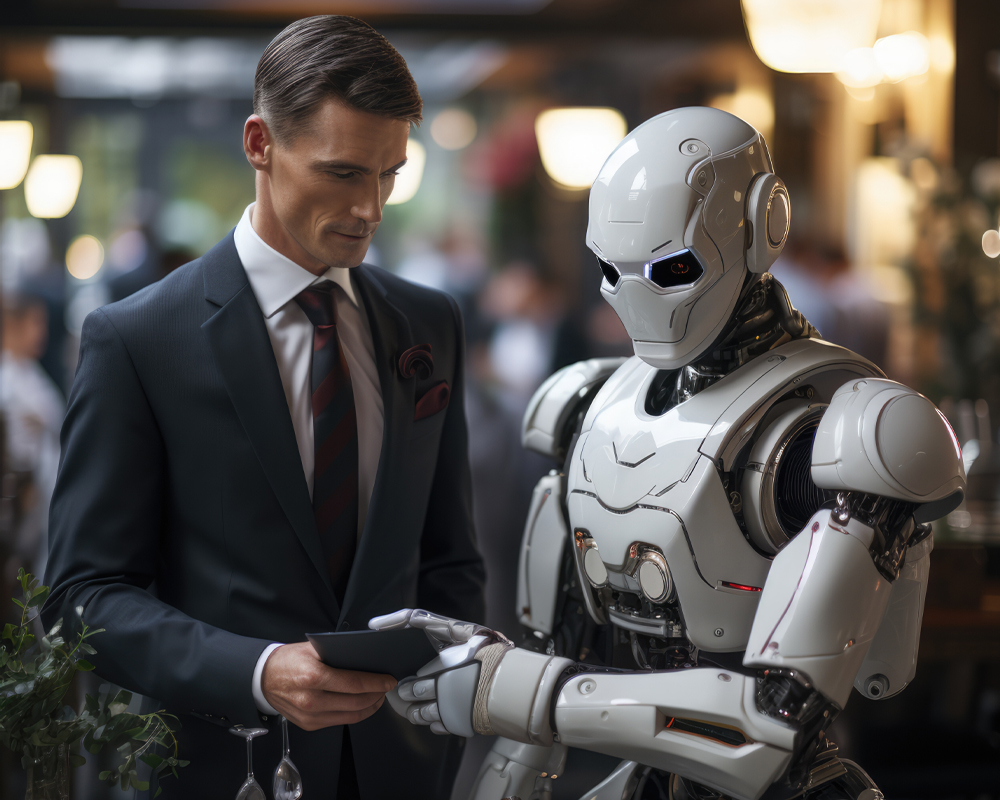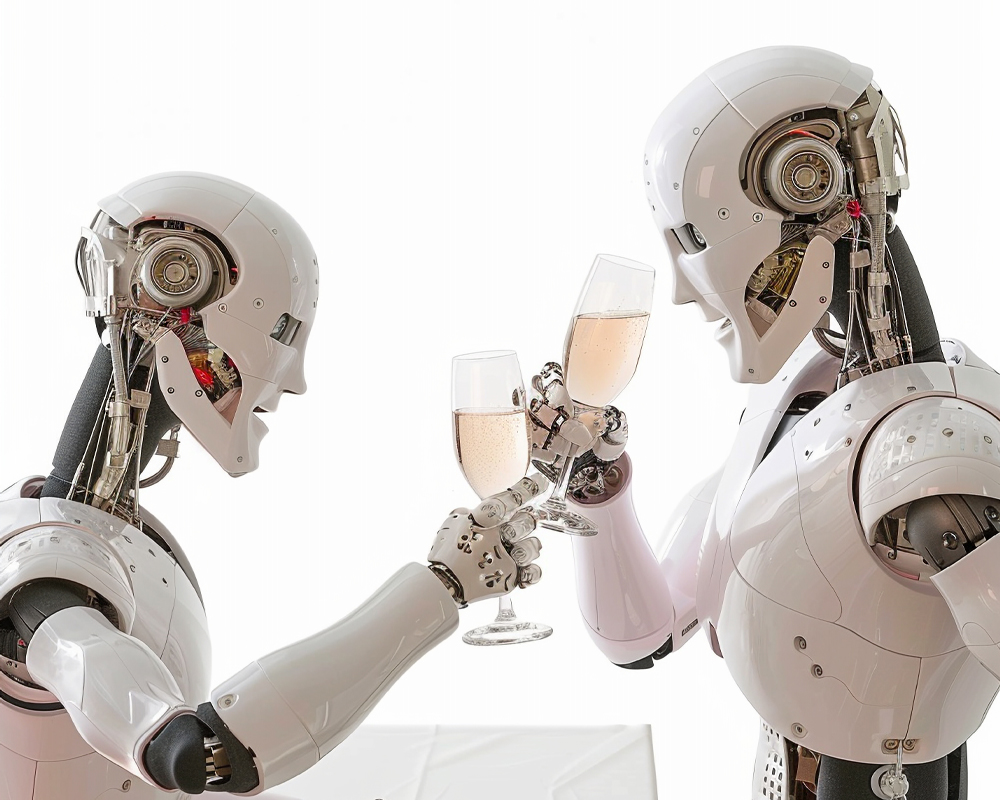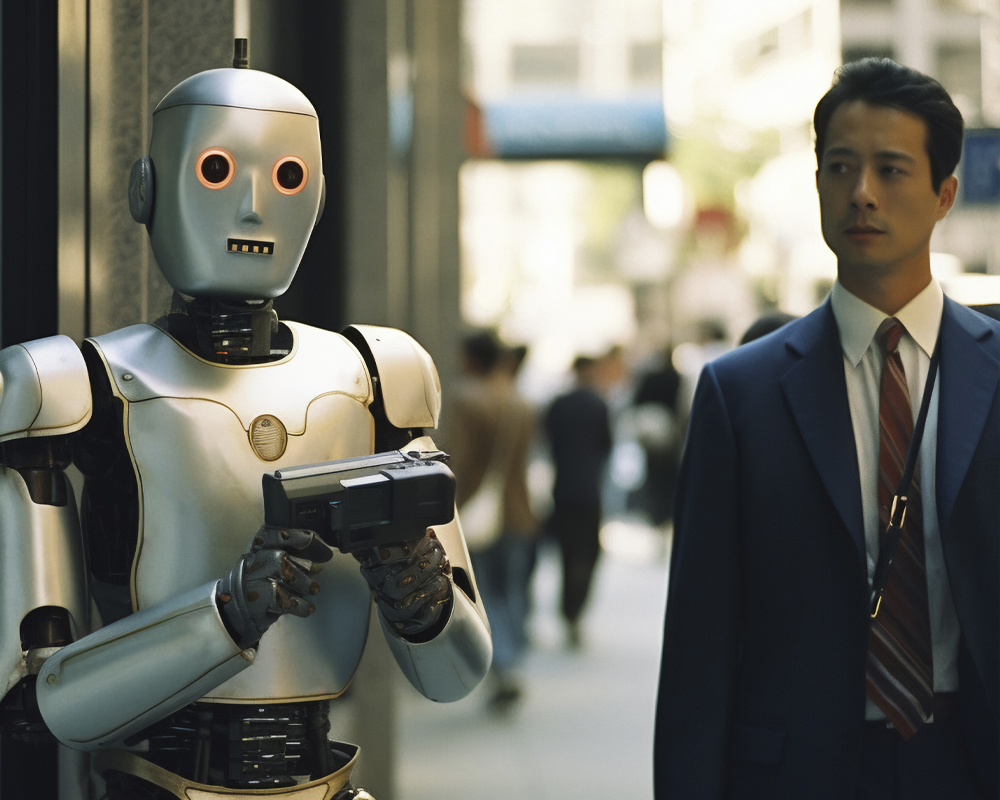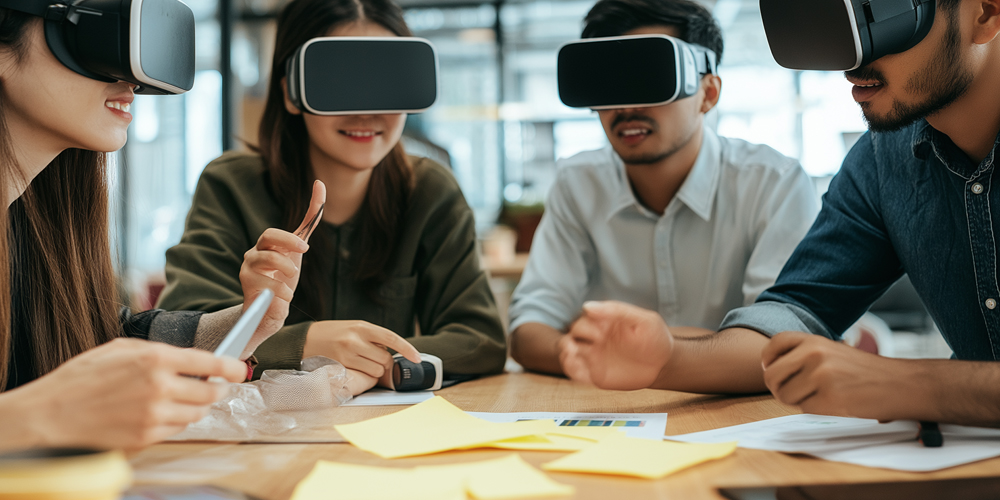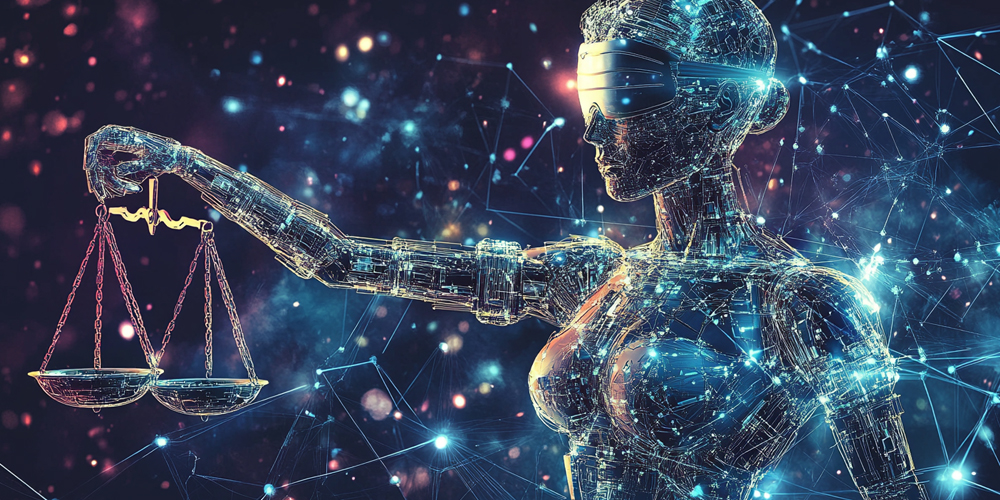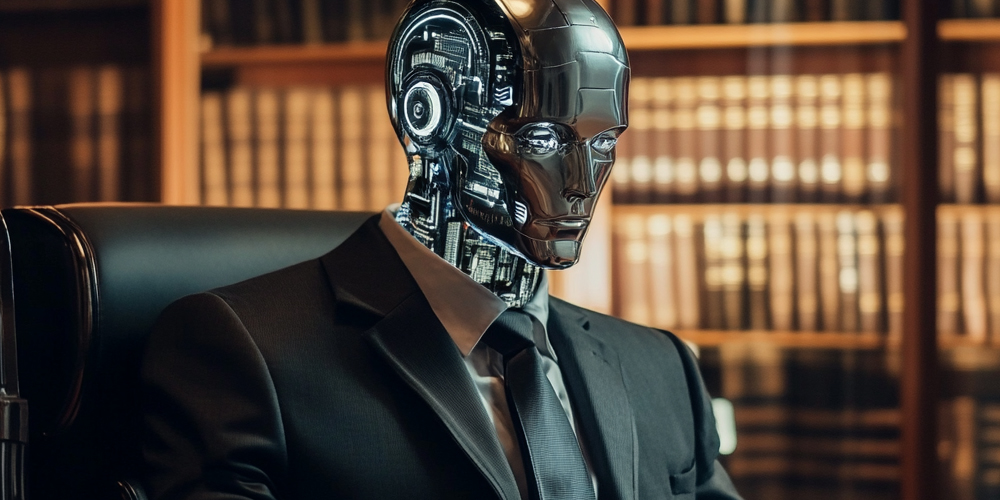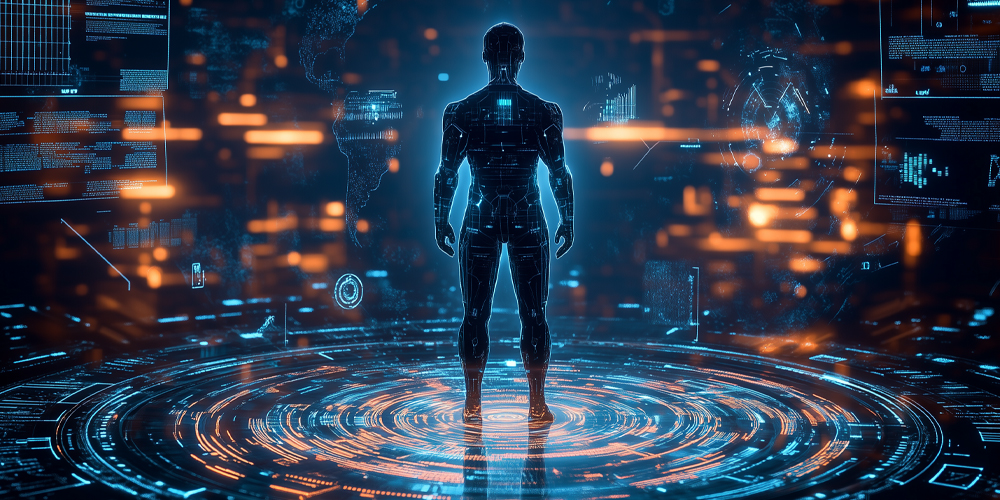Understanding AI Job Creation
The rise of artificial intelligence (AI) has sparked significant discussions about its impact on the job market. A prevalent question surrounding this topic is: AI vs Human Jobs: Will Robots Replace Us? While fears about mass unemployment may dominate headlines, it is crucial to explore the nuances of how AI is actually creating new job opportunities.
The Emergence of New Job Roles
AI technology is not just replacing existing jobs; it is also catalyzing the creation of entirely new roles in various sectors. For instance, jobs in data science, machine learning engineering, and AI project management have surged in demand, driven by the increasing integration of AI into business processes.
Companies are seeking professionals who can develop algorithms, analyze AI-generated data, and manage the technology’s implementation in their operations. This trend is evident in sectors such as healthcare, where roles like healthcare data analyst and AI-driven diagnostics specialists are becoming more common.
Enhancing Human Roles
Beyond creating new jobs, AI is also enhancing existing roles by automating repetitive tasks. This allows employees to focus on more complex, creative, and strategic aspects of their jobs. For example, in customer service, AI chatbots handle basic inquiries, freeing customer service representatives to tackle more complicated customer issues.
In the field of marketing, AI tools can analyze large datasets to derive insights and forecast trends, enabling marketers to devise more effective strategies without sacrificing the human touch essential for maintaining customer relationships.
Industry-Specific Job Creation Examples
Several industries are witnessing substantial job creation due to AI. In agriculture, AI-powered tools are optimizing crop yields, leading to a need for agronomists skilled in AI technologies. Similarly, in manufacturing, AI is driving a shift toward smart factories, which require technicians and engineers who can maintain and improve the AI systems in use.
Moreover, the entertainment industry is embracing AI to create content, leading to roles such as AI content creator and virtual reality designers. These roles could not only provide employment but also challenge creative professionals to explore new artistic possibilities.
Upskilling and Reskilling Opportunities
The AI revolution also opens avenues for upskilling or reskilling the existing workforce. As AI systems evolve, there is an urgent need for employees to enhance their skill sets to remain relevant in an AI-focused job market. Companies and educational institutions are responding by offering training programs that focus on digital literacy, data analysis, and AI technologies.
For instance, partnerships between tech companies and educational institutions are increasingly common, facilitating learning programs that equip workers with the skills required to thrive alongside AI technologies.
Addressing Concerns About Job Displacement
While it is important to recognize the potential of AI job creation, concerns about job displacement due to automation cannot be overlooked. Certain tasks within roles may be interchangeable with AI capabilities, particularly in fields like manufacturing and transportation.
However, historical precedents suggest that while some jobs become obsolete, others emerge. The key to navigating this transition lies in adaptive strategies, where workers can evolve alongside technological advancements.
Conclusion: A Collaborative Future
The future landscape of employment is likely to emphasize collaboration between AI and human workers rather than outright replacement. The question of AI vs Human Jobs: Will Robots Replace Us? can be reframed to explore how AI can serve as a complement to human capabilities. By understanding this interaction, businesses can harness the potential of AI while fostering an environment rich in job opportunities forged through innovation and adaptation.
AI and Job Replacement
Understanding the Landscape
As technology continues to evolve, AI and job replacement have become central topics of discussion. The advent of artificial intelligence raises critical questions regarding the future of work. AI vs Human Jobs: Will Robots Replace Us? is not merely a rhetorical question; it encapsulates genuine concerns across various sectors regarding job security and the evolving role of human workers.
The Proliferation of AI Technologies
AI technologies are being integrated into a multitude of industries, from manufacturing and healthcare to finance and customer service. For instance:
- Manufacturing: AI-driven robots assist in assembly lines, automating repetitive tasks that were once carried out by human workers.
- Customer Service: Chatbots powered by AI handle common queries and provide support, reducing the need for human representatives.
- Healthcare: AI algorithms analyze medical data and assist in diagnostics, potentially minimizing the role of administrative and support staff.
Jobs at Risk of Replacement
Certain job categories are more susceptible to being replaced by AI. These include:
- Repetitive and Routine Jobs: Positions that involve monotonous tasks are prime candidates for automation. Jobs in manufacturing, data entry, and assembly lines are often highlighted as vulnerable.
- Customer Interaction Roles: As mentioned, AI chatbots and virtual assistants can efficiently manage customer inquiries, threatening roles in customer service.
- Transportation: Autonomous vehicles are on the rise, which could lead to the reduction of jobs in trucking and taxi services.
Jobs Resilient to AI Replacement
Not all jobs are equally at risk. Many roles require complex problem-solving skills, emotional intelligence, and human creativity. Examples include:
- Creative Professions: Careers in art, writing, and design rely on human imagination and cultural nuances that AI cannot fully replicate.
- Healthcare Providers: While AI can assist in diagnostics, the nuances of patient care, empathy, and ethical considerations are inherently human.
- Skilled Trades: Jobs requiring physical dexterity, such as plumbing or construction, are challenging for robots to navigate effectively.
The Future Job Market
While job displacement is a genuine concern, it’s important to note that AI can also create new employment opportunities. Innovations often lead to the emergence of new roles that didn’t previously exist. For instance:
- AI Specialists: As AI technologies grow, there is an increasing need for professionals who can develop and maintain these systems.
- Data Analysts: The rise of big data necessitates skilled individuals who can interpret complex datasets to drive business decisions.
- AI Ethics Consultants: With the growing concern around ethical implications in AI, there will be a demand for experts who can navigate the moral landscape.
Preparing for the Shift
To mitigate the impact of AI on job replacement, individuals and organizations must focus on adaptation and reskilling. Strategies include:
- Continuous Learning: Emphasizing lifelong learning can help workers stay relevant in their fields, acquiring new skills that complement AI.
- Interdisciplinary Education: Education systems should promote skills in technology, creativity, and critical thinking, preparing students for a dynamic job market.
- Adaptability: Encouraging a mindset of adaptability and innovation can help workers navigate changes in their industries.
Conclusion
The question of AI vs Human Jobs: Will Robots Replace Us? does not have a straightforward answer. While certain jobs may be at risk, the evolution of AI also opens up new avenues for employment and innovation. By focusing on adaptation, learning, and leveraging human strengths, society can navigate this complex landscape effectively.
Enhanced Productivity
One of the most significant benefits of integrating AI in the workplace is the boost in productivity that organizations experience. AI tools are capable of processing and analyzing vast amounts of data at speeds far beyond human capabilities. For instance, data entry tasks that once took hours or even days can now be completed in a matter of minutes using AI algorithms.
Moreover, AI can automate repetitive tasks, allowing employees to focus on more complex and value-added activities. For example, AI-powered chatbots can handle customer inquiries 24/7, freeing up human workers to tackle more intricate issues that require a personal touch.
Improved Decision-Making
AI enhances decision-making processes by providing valuable insights derived from data analysis. With machine learning algorithms, AI can identify patterns and trends that might be invisible to human analysts. This capability allows organizations to make informed decisions more efficiently.
For example, businesses utilizing AI in market analysis can predict consumer behavior and adjust their strategies accordingly. This level of data-driven insight helps companies retain a competitive edge, which is increasingly crucial in today’s fast-paced market environment.
Cost Efficiency
Implementing AI solutions can lead to significant cost savings for businesses. By automating mundane tasks, organizations can reduce labor costs and minimize errors that might lead to financial losses.
For instance, in manufacturing, AI systems can optimize production processes, manage supply chains, and improve inventory control, resulting in reduced waste and lower overhead costs. According to various studies, companies that have adopted AI technologies have reported enhanced efficiency and a measurable return on investment (ROI).
AI vs Human Jobs: Will Robots Replace Us?
The question of whether AI will replace human jobs is a prevalent concern among the workforce. While it’s true that certain tasks are automated through AI, it is essential to consider the complementary role of AI rather than solely viewing it as a replacement.
For instance, in the field of healthcare, AI algorithms assist doctors in diagnosing diseases by analyzing medical images faster and more accurately than humans. However, the human element of empathy and understanding is irreplaceable, ensuring that AI acts as a tool that enhances human capabilities rather than replacing them entirely.
Personalized Customer Experience
AI technologies enable businesses to deliver personalized experiences to their customers. By analyzing user behavior and preferences, AI can help create tailored marketing strategies and product recommendations.
A great example is the use of recommendation engines by online retailers. Companies like Amazon employ AI to analyze browsing and purchase history, suggesting products that customers are most likely to buy. This level of personalization not only improves customer satisfaction but also boosts sales and customer loyalty.
Workforce Development and Training
With AI taking over routine tasks, there is a growing need for workforce development and training. AI systems can identify skill gaps among employees and recommend personalized learning paths. This ensures that the workforce remains relevant and adept at navigating emerging technologies.
Many organizations are now investing in upskilling their employees in AI and data analytics, preparing them for future roles that will undoubtedly involve collaborating closely with these technologies.
Conclusion
In summary, the integration of AI in the workplace offers numerous benefits, including enhanced productivity, improved decision-making, cost efficiency, a more personalized customer experience, and better workforce development. While concerns about AI vs Human Jobs: Will Robots Replace Us? remain valid, the reality is that AI serves as an enhancer of human work rather than a direct replacement.
Understanding Customization in Robotics
Customization in robotics refers to the ability to tailor robotic systems to meet specific needs of various industries and applications. This adaptability allows robots to perform tasks ranging from manufacturing to healthcare, all while addressing the unique challenges that each sector presents. The importance of customization cannot be overstated, as it directly influences the effectiveness, efficiency, and usability of robotic systems.
The Role of AI in Customizing Robotics
Artificial Intelligence (AI) significantly contributes to the customization of robotic systems. With advanced algorithms and machine learning techniques, robots can learn from their environments and adapt their behaviors accordingly. This adaptability allows for a greater degree of personalization in their functions.
Example: In manufacturing environments, AI can enable robots to adjust their operations based on real-time data from machinery. For instance, if one assembly line is experiencing issues, AI-driven robots can reconfigure their processes to compensate for the delay, thereby minimizing downtime.
Customization in Industrial Robotics
Industrial robotics frequently requires customization for specific tasks. Robots can be equipped with interchangeable tools, programmed to perform varied functions, or integrated with sensors that allow them to determine the best approach for each situation.
Example: Collaborative robots, or cobots, are designed to work alongside human workers. These robots can be customized with different end-effectors, software, and safety features to suit particular workflows, making them highly versatile in environments like warehouses or assembly lines.
Customization in Service Robots
Service robots, which perform tasks in sectors like healthcare and hospitality, also benefit from extensive customization. These robots can be programmed to handle specific scenarios, such as assisting the elderly or serving food in restaurants.
Examples of Service Robot Customization
1. Healthcare Robots: Robots designed to assist medical staff can be customized to handle particular tasks such as medication dispensing, patient monitoring, and even performing basic diagnostic tests.
2. Hospitality Robots: In hotels, robots can be tailored to deliver room service or assist guests. Their interfaces can be customized to accommodate multiple languages or specific user preferences.
AI vs Human Jobs: Will Robots Replace Us?
The debate around whether robots will ultimately replace human jobs has gained momentum, especially with the advancements in customizable robotics and AI. Some experts argue that robots, particularly those that are highly customizable, will take over repetitive and dangerous jobs.
Insights: While robots can perform many tasks more efficiently than humans, customization allows for the integration of humans and robotics in a collaborative manner. Instead of outright replacement, many jobs are likely to evolve, requiring new skills for human workers to manage and work alongside robotic systems.
The Future of Work in a Customized Robotic Environment
The future will likely see a coexistence of robots and humans, with a shift towards more complex job roles for individuals. Customization enables robots to handle mundane tasks, allowing humans to focus on creative and strategic positions. Industries that leverage customized robotics could see increased productivity and innovation.
Overall, the intersection of AI and customization in robotics is a developing field that raises pertinent questions about the future of work. As robots become increasingly capable and adaptable, the discussion around AI vs Human Jobs: Will Robots Replace Us? will continue to shape the landscape of employment and technology.
Educational Programs on AI and Robotics
Overview of AI and Robotics Education
As artificial intelligence (AI) and robotics become integral to various industries, educational programs are evolving to equip students with the necessary skills. These programs span multiple levels, from primary education to higher studies, focusing on core principles of AI, machine learning, and automation. Their goal is to prepare future professionals to thrive in a landscape where technology plays an increasingly dominant role.
Types of Educational Programs
Various educational institutions offer diverse programs focusing on AI and robotics:
- Undergraduate Degrees: Programs in computer science, robotics engineering, and mechatronics provide foundational knowledge.
- Graduate Programs: Advanced degrees, such as Master’s in AI or PhD in robotics, focus on specialized research and development.
- Certification Courses: Short-term courses offered by universities and online platforms like Coursera and edX focus on practical applications, enabling professionals to upskill.
- Workshops and Bootcamps: Intensive training sessions designed for individuals wanting hands-on experience in programming and building robots.
Curriculum Highlights
Programs typically include a mix of theoretical and practical components:
- Programming Languages: Understanding languages like Python, C++, and Java is essential for AI development.
- Machine Learning: Courses focus on algorithms, data analysis, and neural networks.
- Robotics Fundamentals: Teaching the basics of robot design, control systems, and automation.
- Ethics in AI: Addressing the moral implications of AI technology and the societal impact, including discussions around AI vs Human Jobs: Will Robots Replace Us?.
Real-World Applications
Students are encouraged to engage in projects that demonstrate real-world applications of AI and robotics:
- Robotics Competitions: Events like FIRST Robotics and RoboCup foster teamwork and innovation among students.
- Internships: Partnerships with tech companies allow students to gain hands-on experience and network within the industry.
- Research Projects: Many programs emphasize collaborative research that addresses current challenges in AI and robotics, often leading to publishable findings.
Discussion on AI vs Human Jobs: Will Robots Replace Us?
The controversial topic of AI vs Human Jobs: Will Robots Replace Us? is a focal point in many discussions throughout educational programs. Students explore the following aspects:
- Job Automation: Understanding which sectors are most susceptible to automation, such as manufacturing, customer service, and transportation.
- Job Creation: Analyzing how AI can create new job categories and demand for tech-savvy roles.
- Human-Robot Collaboration: Investigating how human expertise complements AI technologies rather than being wholly replaced.
- Future Workforce Skills: Identifying skills that will remain valuable in an increasingly automated world, such as creativity, critical thinking, and emotional intelligence.
Conclusion of Educational Impact
Educational programs on AI and robotics are vital not only to foster technological literacy but also to prepare students for the complexities of a future where AI vs Human Jobs: Will Robots Replace Us? remains a pivotal question. As educators strive to instill a balance of technical skills and ethical considerations, the importance of comprehensive education in this field cannot be overstated.
Understanding Human-Robot Collaboration
Human-Robot Collaboration (HRC) refers to the interactive partnership between humans and robots, where both entities work together to achieve common goals. This concept leverages the unique strengths of each party: humans bring creativity, emotional intelligence, and critical thinking, while robots provide precision, speed, and the ability to handle hazardous tasks. As industries evolve, the importance of HRC is increasingly recognized, particularly in settings like manufacturing, healthcare, and logistics.
The Role of AI in Human-Robot Collaboration
Artificial Intelligence (AI) plays a crucial role in enhancing the capabilities of robots, enabling them to learn from their environments and adapt their behaviors accordingly. For example, AI-powered collaborative robots, or “cobots,” can assist workers by taking over repetitive tasks such as assembly line work or material handling. This not only increases productivity but also allows human workers to focus on more complex tasks that require critical thinking.
Benefits of Human-Robot Collaboration
- Increased Efficiency: Robots can operate faster and with fewer errors than humans, especially in high-volume production environments.
- Enhanced Safety: Robots can take on dangerous tasks, reducing the risk of workplace accidents and injuries.
- Improved Job Satisfaction: By offloading mundane tasks onto robots, human workers can engage in more fulfilling and rewarding activities.
AI vs Human Jobs: Will Robots Replace Us?
The debate around “AI vs Human Jobs: Will Robots Replace Us?” centers on the impact of robotic automation on employment. While it is true that some jobs may become obsolete due to automation, experts argue that robots are more likely to supplement human work rather than outright replace it. For instance, in a manufacturing setting, robots may handle the assembly of parts, but human workers are still necessary for quality control, problem-solving, and decision-making.
Real-World Examples of HRC
Numerous industries demonstrate the successful integration of HRC:
Manufacturing
In automotive manufacturing, collaborative robots work alongside human workers to streamline the assembly processes. For example, a cobot might assist in lifting heavy parts, thus reducing physical strain on workers and enhancing overall productivity.
Healthcare
In the healthcare sector, robots like surgical assistants can enhance precision during surgeries. However, the human surgeon’s expertise and decision-making skills remain irreplaceable.
Logistics and Warehousing
Companies like Amazon employ robots for sorting and transporting items within warehouses. Here, robots handle the heavy lifting, freeing up human workers to manage logistics and customer service roles more effectively.
Challenges of Human-Robot Collaboration
Despite its advantages, HRC is not without challenges:
- Training and Adaptation: Workers need proper training to interact efficiently with robots.
- Trust Issues: Employees might be hesitant to trust robots, fearing job loss or malfunction.
- Integration Compliance: Ensuring robots comply with safety regulations and effectively integrate into existing workflows can be complex.
The Future of Human-Robot Collaboration
The future of HRC is promising, with continuous advancements in AI and robotics. As technology becomes more sophisticated, we can expect to see even more seamless integration between humans and machines. This collaboration will open new pathways for innovation and redefine the landscape of numerous industries.
Jobs AI Will Replace
The debate around AI vs Human Jobs: Will Robots Replace Us? has escalated as advancements in artificial intelligence continue to evolve rapidly. Many industries are already experiencing shifts in workforce dynamics due to the integration of AI technologies. This section explores specific jobs at risk of being replaced by AI and automation.
Administrative Support Roles
Positions such as administrative assistants and data entry clerks are increasingly being automated through AI systems capable of handling scheduling, managing email correspondences, and processing information. For instance, software solutions like virtual assistants can perform tasks that were traditionally reserved for human workers. This not only streamlines operations but also reduces costs for businesses.
Manufacturing and Assembly
Automation in manufacturing has replaced many assembly line jobs. Robots are now tasked with assembling products at a speed and accuracy that far surpasses human capability. Industries such as automotive production exemplify this shift, where robots perform repetitive tasks such as welding, painting, and assembly. According to industry reports, this trend is expected to continue as robotic technology improves.
Customer Service Representatives
With the rise of chatbots and AI-driven customer service systems, roles in customer support are increasingly at risk. These systems can handle a multitude of inquiries simultaneously, providing instant responses to customers without human intervention. Major companies have begun implementing AI chatbots to manage common service inquiries, making traditional customer service roles less necessary.
Transportation and Delivery Services
The advent of autonomous vehicles poses a significant threat to jobs within the transportation sector. Truck drivers and delivery personnel may find their roles diminished as companies experiment with self-driving technology. Several major logistics companies are already testing automated delivery systems that could reshape the industry landscape in the coming years.
Retail Cashiers
Self-checkout systems and AI-driven kiosks are increasingly commonplace in retail environments, threatening the security of cashier positions. Many grocery stores and retail chains have adopted these technologies to enhance efficiency and reduce labor costs. As a result, the demand for human cashiers is likely to decline as more consumers opt for automated options.
Healthcare Diagnostics
While the healthcare sector is often viewed as a field that requires a human touch, AI is making significant inroads into diagnostics and data analysis. AI algorithms can analyze medical images and detect anomalies faster than human professionals in some instances. As these technologies become more reliable, the need for human radiologists and lab technicians may be challenged, particularly in routine diagnostic tasks.
Legal Research and Paralegal Work
AI is transforming the legal profession by automating many research and document review tasks that were previously done by paralegals. Tools that utilize natural language processing allow for the rapid analysis of legal documents, thoroughly searching through vast legal databases for relevant information much quicker than a human can. This shift could impact entry-level legal positions significantly.
Conclusion: The Future of Jobs in an AI World
As we analyze AI vs Human Jobs: Will Robots Replace Us?, it’s evident that many jobs are at risk due to the capabilities of AI technologies. However, while certain roles may be replaced, new opportunities within tech development, oversight, and AI collaboration will emerge, necessitating a workforce equipped with new skills to adapt to an evolving job market.
Introduction to AI vs Human Jobs
The debate around AI vs Human Jobs: Will Robots Replace Us? continues to gain traction as advancements in artificial intelligence reshape the workforce landscape. While many jobs are at risk of automation, there are certain roles that AI is unlikely to fully replace. Understanding these roles can provide insights into the future job market and the unique value humans bring to the professional sphere.
Creative Professions
One of the key areas where AI falters is in the creative domain. Professions such as writers, artists, and musicians require a deep understanding of human emotions and experiences, which are aspects that AI struggles to replicate. For example, while AI can generate text, it lacks the nuanced storytelling that captures the essence of human experience. The same applies to visual arts and music, where originality and emotional depth remain distinctly human traits.
Healthcare and Emotional Support Roles
Jobs in the healthcare sector, such as nurses, psychologists, and social workers, are less likely to be replaced by AI. These professions demand a high level of emotional intelligence and empathy, which AI has not yet mastered. For instance, a nurse’s ability to comfort a patient or a psychologist’s skill in understanding complex human emotions are essential qualities that contribute to effective care and support.
Skilled Trades
Skilled trades, including electricians, plumbers, and carpenters, require hands-on skills and adaptability that robots cannot easily acquire. Although automation can assist in certain aspects, such as manufacturing, the ability to troubleshoot problems in real-time and respond to unique challenges on-site remains a distinctly human capability. These professions also benefit from personal interaction and customer service, further solidifying their position against automation.
Education and Training
Education professionals, such as teachers and trainers, play a crucial role in shaping future generations. While AI can enhance learning experiences through personalized tutoring, the foundational aspects of teaching—such as inspiring students, fostering critical thinking, and building relationships—cannot be replicated by machines. The dynamic nature of classroom interactions requires adaptability and emotional engagement, traits inherent to human educators.
Leadership and Strategic Roles
The realm of leadership, particularly in corporate environments, relies heavily on human intuition and interpersonal skills. Executives and managers must navigate complex social dynamics, inspire teams, and make decisions that consider a wide range of human factors. The essence of leadership involves understanding cultural contexts, motivating people, and fostering innovation—all areas where AI lacks the necessary depth.
Conclusion
As we explore the question of AI vs Human Jobs: Will Robots Replace Us?, it becomes clear that while AI may transform several job functions, certain roles maintain a unique human touch that machines cannot replicate. By focusing on our innate abilities—creativity, empathy, skilled craftsmanship, educational insight, and leadership—we can ensure that we remain indispensable contributors to the workforce in the age of automation.
Overview of Ongoing Development of Robots
The ongoing development of robots integrates advancements in automation, robotics, and artificial intelligence (AI). This innovative fusion aims to improve efficiency, enhance productivity, and maintain a competitive edge across various industries. As robots evolve, they increasingly take on complex tasks traditionally performed by humans.
Technological Innovations Driving Robotics
Recently, several key technological innovations have catalyzed the rapid evolution of robots:
- Machine Learning: This AI subset enables robots to learn from data and improve their performance over time. For instance, robots in manufacturing can adapt their operations based on real-time data, reducing errors and increasing output.
- Sensor Technology: Advanced sensors provide robots with better environmental awareness. Robots equipped with cameras, LiDAR, and other sensors can navigate complex spaces, making them suitable for applications in logistics and autonomous vehicles.
- Collaborative Robotics (Cobots): Cobots are designed to work alongside humans rather than replace them. They are increasingly used in various sectors, from healthcare to manufacturing, effectively augmenting human labor while ensuring safety.
Industry Applications of Robotics
Robots are being deployed in numerous industries, showcasing their versatility and potential to transform the workforce:
- Manufacturing: Robotic arms and automated assembly lines improve production rates and maintain high standards of quality. Companies like Foxconn are prime examples of high-volume manufacturers that harness robotics to streamline operations.
- Logistics and Warehousing: Robots like Amazon’s Kiva System reduce time spent on inventory management and order fulfillment, significantly cutting operational costs.
- Healthcare: Robotics are increasingly being used in surgeries, rehabilitation, and assistive technologies. For example, surgical robots can perform precise operations with minimal invasiveness, enhancing patient recovery times.
AI vs Human Jobs: Will Robots Replace Us?
The question of whether robots will replace human jobs is a contentious issue. As automation becomes more prevalent, it raises concerns about job displacement. However, the reality is more nuanced:
- Job Transformation: While some jobs may become obsolete, many roles will evolve rather than disappear. For instance, in the automotive industry, robots handle repetitive tasks, allowing humans to focus on design and quality control.
- New Job Creation: The field of robotics and AI spans multiple disciplines—engineering, programming, and maintenance. These advancements create new job opportunities that require higher skills, potentially leading to increased employment in tech-related sectors.
- Enhanced Productivity: By automating mundane tasks, robots can free humans to engage in more creative and strategic roles, fostering innovation within companies. For example, marketing teams can use data analytics powered by AI to refine their strategies, thanks in part to robotics handling data collection.
Conclusion on Robots and Employment
The ongoing development of robots will indeed affect the job market, but rather than a straightforward replacement of human workers, this transition presents opportunities for workers to adapt and thrive in a rapidly evolving landscape. The balance between AI vs Human Jobs: Will Robots Replace Us? hinges on leveraging human creativity and critical thinking alongside the efficiency and precision of robots.
Understanding AI’s Role in the Workplace
As businesses increasingly adopt artificial intelligence (AI)</strong) technologies, understanding how to prepare for AI in the workplace becomes crucial. AI is revolutionizing sectors from healthcare and cybersecurity to entertainment and creative industries. The integration of AI is not merely a technological enhancement but a paradigm shift that reshapes job roles, workflows, and organizational cultures. The key question remains: AI vs Human Jobs: Will Robots Replace Us? This section aims to demystify AI’s impending influence on the job market and what it signifies for the future workforce.
Identifying Opportunities for AI Integration
Before introducing AI, businesses must identify opportunities where AI can augment human capabilities rather than replace them. For example, in healthcare, AI can assist medical professionals by analyzing vast datasets to reduce errors during diagnostics. Similarly, in cybersecurity, AI tools can monitor networks for malicious activity faster and more accurately than humans, allowing cybersecurity teams to focus on strategy and incident response.
Reskilling Employees
Preparing for an AI-augmented workplace necessitates a robust reskilling strategy for employees. As tasks become automated, workers should focus on developing skills that complement AI technologies. Skills in data analysis, critical thinking, and emotional intelligence are becoming more valuable. Programs incorporating AI literacy into training curricula can foster an environment where human and artificial intelligence coalesce effectively.
Promoting Human-AI Collaboration
Instead of viewing AI purely through the lens of competition, companies should emphasize the potential for collaboration between humans and machines. For instance, in the realm of video game development, AI is augmenting designers’ capabilities, enabling them to create richer interactive experiences that were previously impossible. By promoting a culture of collaboration, organizations ensure that their employees feel empowered, rather than threatened, by AI technologies.
Ethical Considerations of AI Adoption
As businesses implement AI solutions, ethical considerations become paramount. Questions surrounding bias in AI algorithms can impact hiring practices and decision-making processes. Developing AI systems that are transparent and unbiased is essential for maintaining trust among employees and stakeholders. Keeping abreast of ethical discussions in AI can assist businesses in formulating responsible policies that safeguard human jobs while leveraging AI’s capabilities. For further insights, exploring the challenges and opportunities of AI can provide valuable context.
Monitoring AI Trends
The landscape of AI is continually evolving. Organizations must stay informed about emerging trends and technologies that could further transform the workplace. Reading about the future of artificial intelligence allows businesses to anticipate changes and adapt accordingly. Regular training and updates will ensure that both the organization and its employees remain agile in the face of technological advancement.
Conclusion: Embracing Change
Preparing for AI in the workplace is less about fearing job losses and more about embracing the change it brings. By understanding the dynamics of AI vs Human Jobs: Will Robots Replace Us?, implementing strategic reskilling initiatives, promoting collaboration, considering ethical implications, and staying informed, organizations can create a future where human intelligence and artificial intelligence thrive together.
